Simple Garden Ideas NZ: Transform Your Outdoor Space Easily
Gardening in New Zealand is a wonderful way to make the most of your outdoor space, no matter how small it may be. Whether you’re looking to grow your own vegetables or create a relaxing green retreat, there are many simple ideas to help you transform your garden without a lot of hassle.
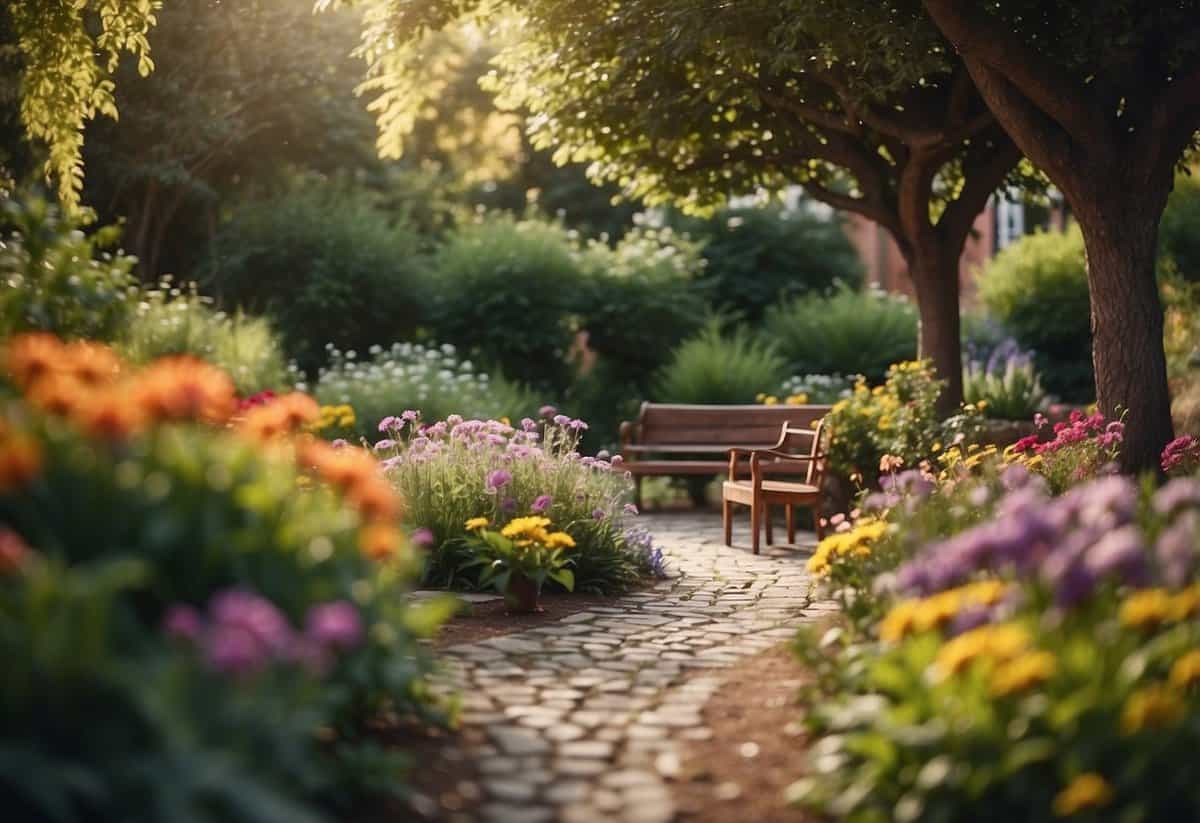
How can you create a beautiful and functional garden with minimal effort? This article will explore some straightforward and easy-to-implement garden ideas that will enhance your outdoor area. From using vertical space to choosing the right plants, these tips will help you enjoy a thriving garden in no time.
1) Succulent Rock Garden
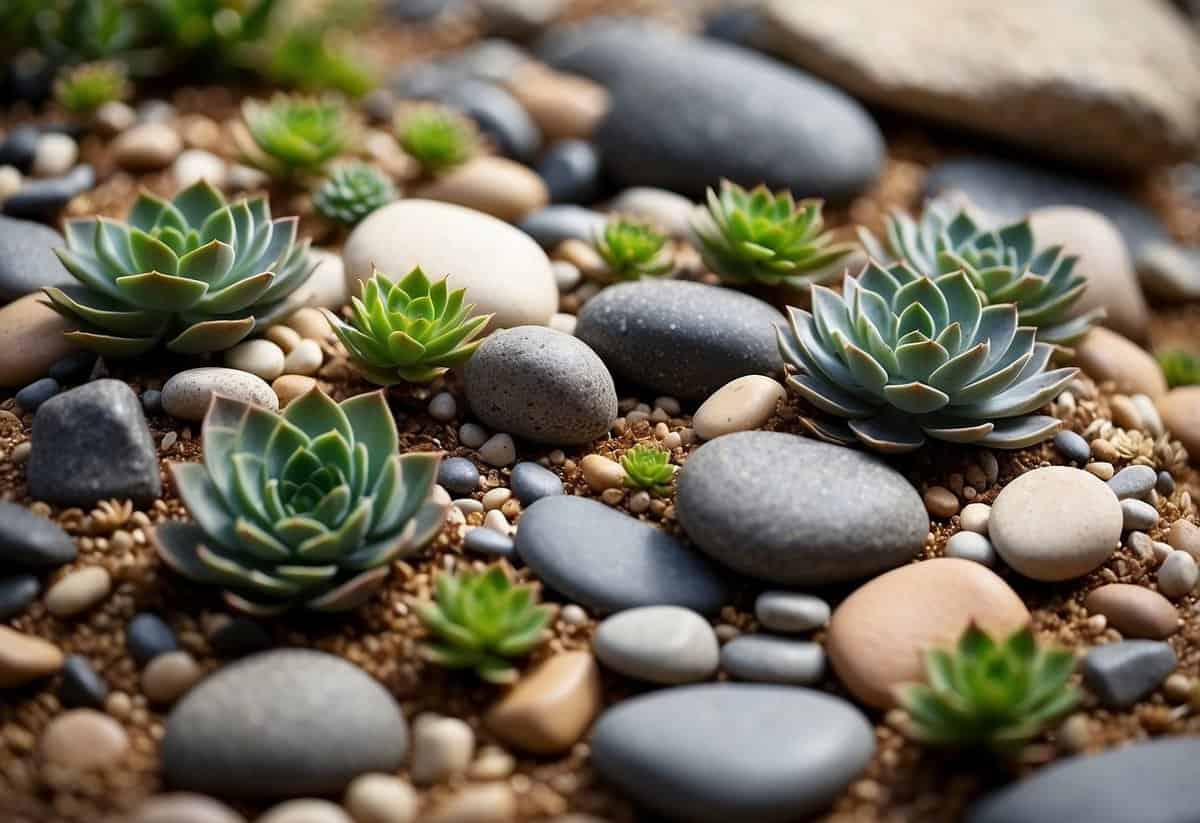
Creating a succulent rock garden is a fantastic idea for your garden in New Zealand. Succulents are perfect for rock gardens because they require minimal water and are easy to care for.
Use flat rocks to add height to your succulent display. This can create an interesting visual effect and make your garden look more dynamic.
Consider planting low-growing succulents that spread out nicely among the rocks. Succulents like sedum and hens-and-chicks create a lush, green look with little maintenance.
For more ideas, check out these beautiful succulent rock garden concepts.
2) DIY Vertical Pallet Planter

Creating a vertical pallet planter is a fun and easy way to grow your garden in a small space. You can use an old pallet, which is perfect for recycling.
First, clean the pallet and sand any rough edges. Measure and mark the slats to fit your plants. This will help you when it’s time to cut and assemble the planter boxes.
Next, attach the bottom of the planter boxes to the pallet slats. Secure them tightly to ensure they can hold the soil and plants. You can use screws or nails for this step.
Line the boxes with a weed mat to prevent soil from falling out. This will also keep unwanted weeds from growing in your boxes. Then, fill the boxes with soil.
Finally, plant your favorite herbs or flowers. A vertical pallet planter is great for herbs like basil and mint. You can even paint the pallet for a unique look. Enjoy your new garden space! For more tips, check out these vertical pallet garden ideas.
3) Recycled Container Garden
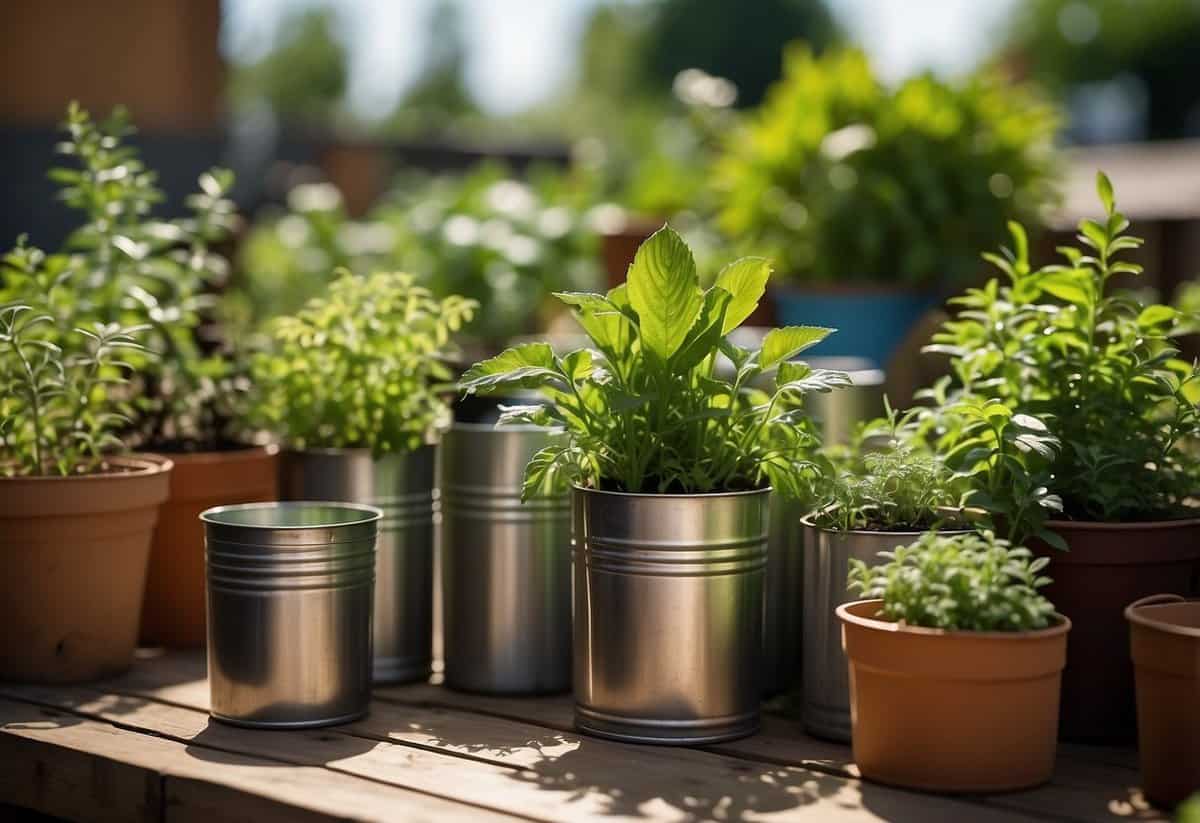
Using recycled materials for container gardening is both eco-friendly and fun.
One idea is to use old plastic bottles. Cut them in half and turn them into hanging planters. This way, you save money and reduce waste.
You can also use containers like old buckets or tin cans. These items make great pots for growing herbs or small flowers.
For drainage, remember to poke a few holes at the bottom of each container. This simple step keeps your plants happy and healthy.
4) Mini Herb Spiral

A mini herb spiral is a perfect addition to your garden. It saves space and looks great.
Start by picking a sunny spot. Use bricks or rocks to create a spiral shape, about 1.6 meters wide. The height should be around 1 meter.
Place heat-loving herbs like rosemary at the top. Plant moisture-loving herbs like mint at the bottom. Fill gaps with soil and plant your herbs.
Enjoy the beauty and convenience of fresh herbs right in your garden! For more details, check out this guide on herb spirals.
5) Hanging Bird Feeder Garden

Creating a hanging bird feeder garden is a fun and easy way to attract birds to your outdoor space.
You can make a simple hanging bird feeder using a few pieces of plywood and a terracotta pot and saucer. This project is perfect for kids and adults alike.
A macrame bird feeder with a modern feel is another great option. The birdseed sits in a terra cotta plant saucer hung from macrame rope, adding a stylish touch to your garden.
Consider making a hanging branch feeder by finding a sturdy branch around 3-5cm in diameter. It’s a great way to repurpose natural materials.
6) Child-Friendly Fairy Garden

Creating a fairy garden with your child can be a fun and magical experience. Begin by filling a wooden box or container with soil. This gives a sturdy base for the garden.
Choose small, kid-friendly plants like marigolds, petunias, and mosses. These plants are easy to care for and colorful.
Let your child decorate a miniature fairy house using a flower pot. Paint it in bright colors and add tiny decorations like twigs or stones.
Consider adding a small pond or pathway. Simply dig a shallow hole for the pond or use small stones to create a path. This can make the garden even more enchanting.
Incorporate miniature accessories such as tiny benches, fairy figurines, and little fences to bring the fairy world to life.
Encourage your child to sketch out their design first. This can make the process easier and more organized.
For more ideas, check out fun DIY fairy garden ideas.
Make sure to choose safe and non-toxic paints and materials, and always supervise the use of glue guns or sharp tools.
7) Water Feature Using Old Pots

Adding a water feature to your garden can be simple and fun. You can use old pots to create a charming waterfall effect.
Start by drilling holes in the base of each pot. This lets the water flow smoothly from one pot to another.
Arrange the pots in a cascading style to create a beautiful waterfall look. For a step-by-step guide, check out this tutorial.
You can add plants around or inside the pots to bring more life to your water feature.
8) DIY Trellis with Climbing Plants
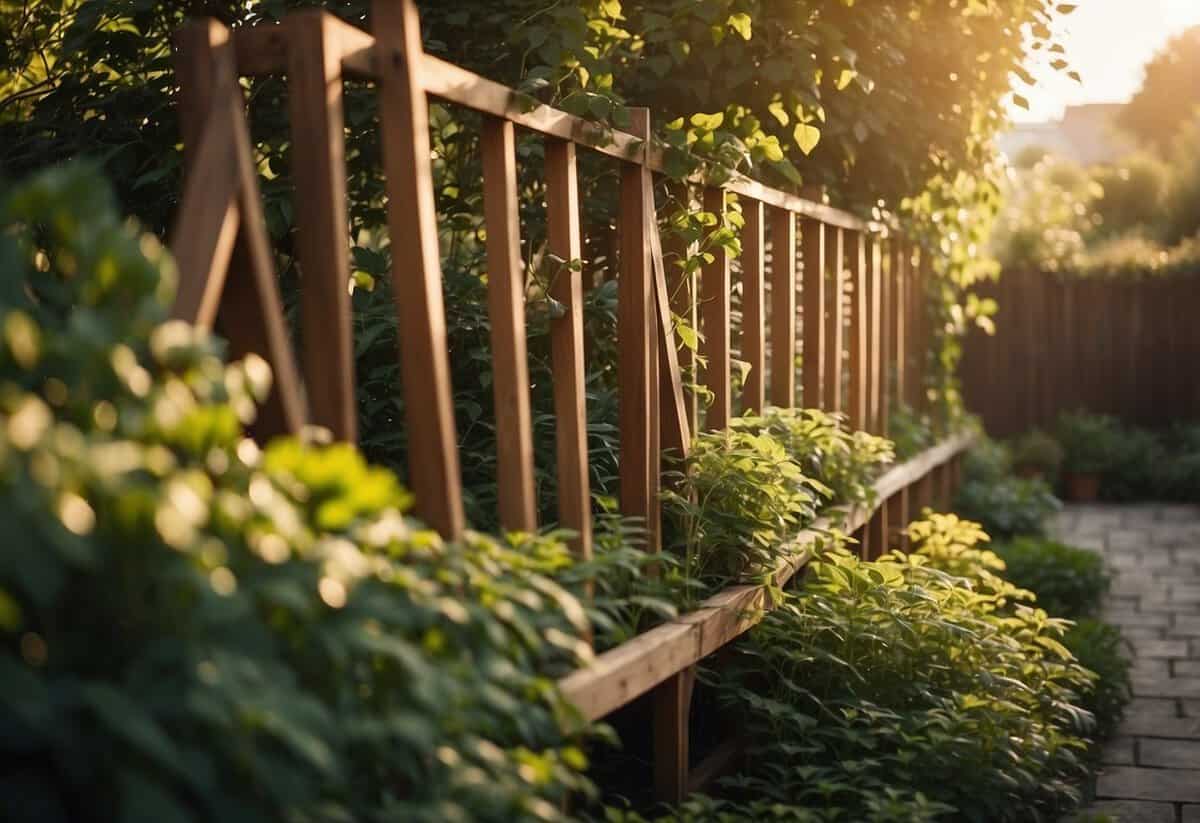
A DIY trellis is a great way to help your climbing plants grow. It’s simple to build and adds height to your garden.
Use materials like wood garden stakes or furring strip board lumber. With a compound miter saw, you can easily shape and size your trellis.
Once built, place it near vegetables like beans, peas, or cucumbers. Secure the young plants to the trellis with garden twine to guide their growth. Building and watching your plants climb will be rewarding and fun!
9) Outdoor Candle Lanterns
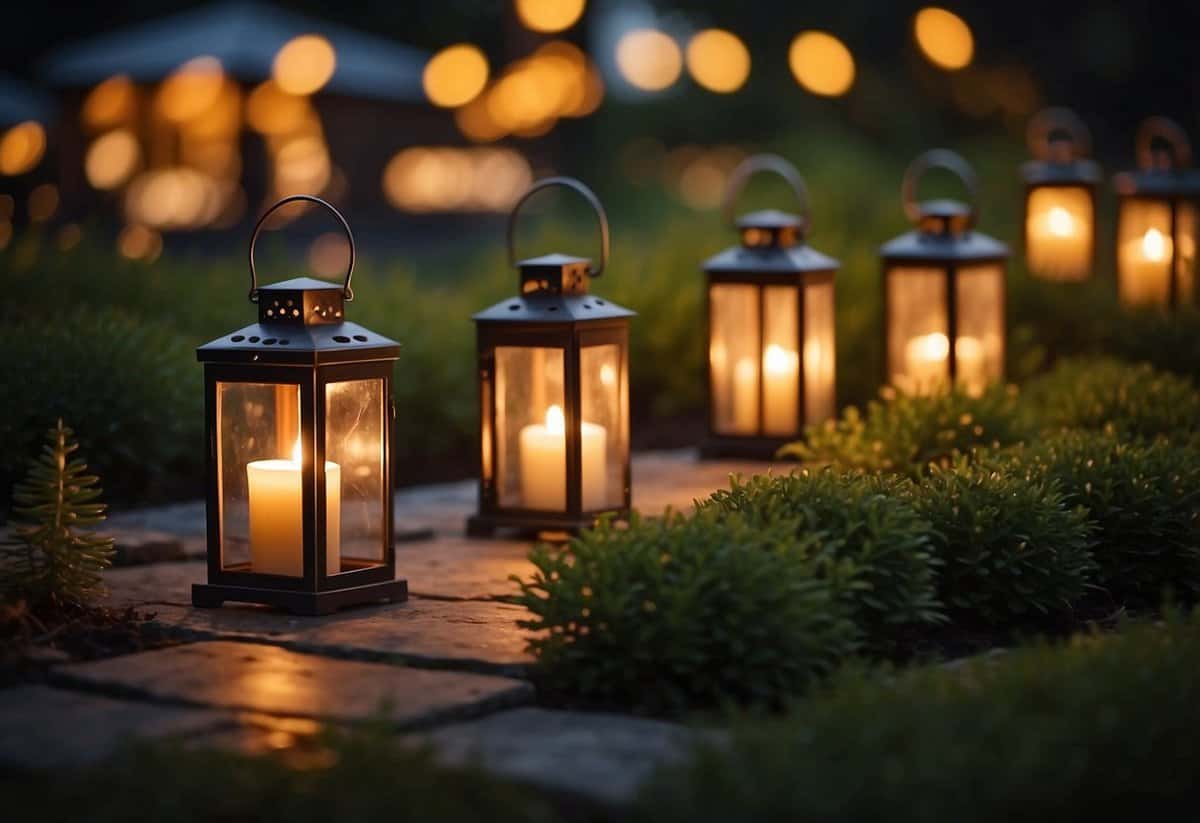
Outdoor candle lanterns add a charming glow to your garden. You can choose simple metal or glass lanterns that fit any style. These lanterns are great for creating a cozy atmosphere in your backyard.
Consider placing them on tables or hanging them from branches. They also work well as centerpieces during garden parties. Find unique or custom options on Etsy New Zealand.
Outdoor candle lanterns are easy to move around. Use them to highlight garden paths or your favorite spots. Their gentle light makes any evening special.
10) Colorful Flower Bed Borders

Adding bright, bold borders to your garden can make a big difference. Start with easy-to-grow plants like catmint, which gives lovely purple and blue blooms. It can also pair well with pink and yellow flowers.
For a striking effect, think about using large blocks of color. Try combining ajuga and anemones for a burst of violet-blue. This simple mix can make your garden pop.
Forget-me-nots are another good choice. These pale blue flowers bloom profusely in spring and are perfect for adding charm to your borders. Just remember to deadhead them to control reseeding.
Design Principles for Simple Garden Ideas in NZ

Designing a simple garden in New Zealand involves understanding the local climate and selecting the right plants to thrive in that environment. This approach helps create a low-maintenance yet beautiful garden.
Understanding the Local Climate
New Zealand’s climate varies widely from subtropical in the north to temperate in the south. Knowing your specific climate zone is crucial. In the northern parts, you may experience warmer, humid conditions, while southern zones can be cooler with more rain.
You should consider rainfall patterns, seasonal temperatures, and wind exposure. For instance, choosing drought-resistant plants in drier regions or plants that can withstand strong winds can save you a lot of time and effort.
One useful approach is to observe existing gardens in your neighborhood. This can give you a good idea of what plants are thriving and what garden styles are most suited to your local climate. You can also get advice from local garden centers or resources that focus on New Zealand climate conditions.
Choosing the Right Plants
Selecting the right plants for your garden is key to minimizing maintenance tasks. Opt for native plants as they are well-adapted to the local conditions and require less care. These plants are typically more resistant to pests and diseases, which means fewer interventions on your part.
Some excellent native choices include the hardy Hebe, which offers beautiful flowers and can thrive in various conditions. Another good option is the Pōhutukawa, known for its vibrant red flowers and resilience in coastal areas.
Think about plant placement as well. Group plants with similar water needs together to make watering easier and more efficient. Incorporating low-maintenance ground covers can reduce weeding and keep the soil healthy.
Adding in a mix of perennials and bulbs, which can be moved or replaced as needed, provides flexibility and keeps your garden looking fresh year-round. For more ideas and inspiration, you can refer to this guide.
Sustainable Gardening Tips
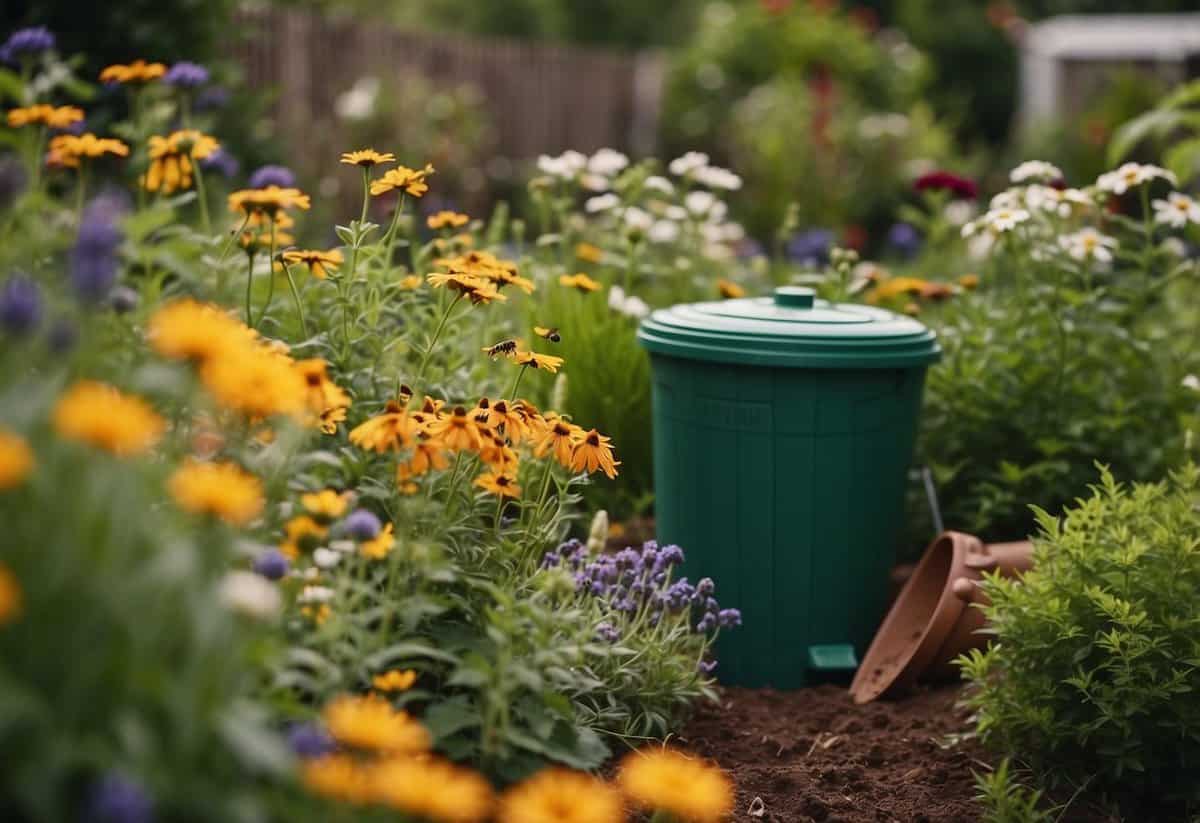
Sustainable gardening focuses on practices that conserve resources and reduce waste. This section will cover water-saving methods and organic fertilizer options to help you create an eco-friendly garden.
Water Conservation Techniques
Water conservation is key to sustainable gardening. Collecting rainwater is an excellent way to reduce reliance on tap water. Set up barrels or tanks to catch rainwater from your roof. Use this water to hydrate your plants without increasing your water bill.
Mulching is another important technique. Applying a layer of organic mulch, like straw or wood chips, helps maintain soil moisture by reducing evaporation. It also suppresses weeds and keeps the soil cooler.
Drip irrigation is a more efficient watering method compared to sprinklers. It delivers water directly to the plant roots, minimizing evaporation and runoff. You can even set it up with a timer for consistent watering.
Group plants with similar water needs together. This way, you can water more efficiently and ensure each plant gets the appropriate amount of moisture.
Organic Fertilizer Options
Using organic fertilizers helps keep your garden free from harmful chemicals. Compost is a fantastic option that recycles kitchen scraps and yard waste into nutrient-rich soil. Start a compost bin for a steady supply of this natural fertilizer.
Green manures, also known as cover crops, are another great choice. Plants like clover or rye can be grown and then worked back into the soil, enriching it with organic matter and nutrients.
Consider using well-rotted animal manures. Cow, sheep, or chicken manure provides a balanced mix of nutrients that promote healthy plant growth. Be sure to let the manure decompose properly before use to avoid burning plants.
Fish emulsion is a fast-acting organic fertilizer. Made from fish waste, it provides a quick nutrient boost and is especially beneficial for leafy greens. Be sure to follow application instructions to avoid over-fertilizing.







